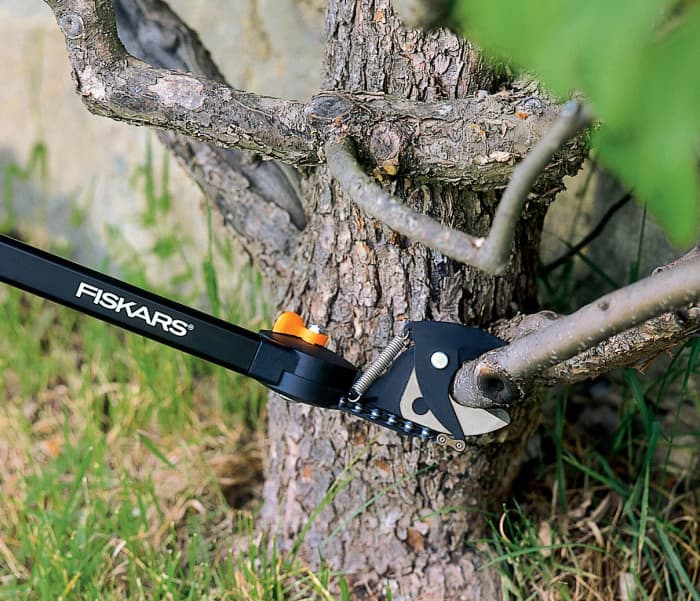Written by John Kelsey and published on https://www.thisoldhouse.com/
Pruning is a horticultural art form. While we prune plants for a host of reasons, not the least of which are trimming, removing dead growth, shaping, cutting for transplanting or the collection of flowers, one need only to look at the practice of bonsai, the method of miniaturizing any tree, and it’s clear how artful it can be. In other words, pruning is not simply the indiscriminate removal of branches, but the appropriate removal of the appropriate branches in an appropriate manner, with the appropriate tool, minimizing the potential damage to a plant.
Table of Contents
Choosing and Using Pruners and Loppers
/cdn.vox-cdn.com/uploads/chorus_image/image/65889309/pruners_loppers_x.0.jpg)
:no_upscale()/cdn.vox-cdn.com/uploads/chorus_asset/file/19489240/pruners_loppers_00.jpg)
If you’ve got even one shrub, sooner or later you’ll need to remove unruly growth and dead or injured branches. With the right assortment of pruners and loppers (pruners are one-handed tools, loppers require two hands), you can keep any plant healthy and well manicured, from rosebushes and shrubs to privacy hedges and small trees.
“The first tool you should buy is a pair of bypass pruners,” says Roger Cook, This Old House landscape contractor. “You can use them for everything, so it’s worth investing about $50 for a good pair; cheaper ones can fall apart with all the use.” Because bypass blades sweep past each other like scissors, they’re best for making clean cuts in living wood. For chopping dead branches, you’ll want to add an anvil lopper (about $30), which has a blade that hits against a soft plate, and a folding saw (about $20) for slicing through thick branches. “You’ll be able to manage most pruning chores with that set of tools,” Roger says.
Pruning can be heavy, repetitive work, and trying to take too big a bite with the wrong tool is the quickest way to increase your own weariness and frustration while also shortening the life of your equipment. Certain tools, like those with compound-action gears, will make the task easier. But the best way to keep things comfortable whenever you go out to prune is to wear gloves and make sure your tools are clean and sharp.
:no_upscale()/cdn.vox-cdn.com/uploads/chorus_asset/file/19489258/pruners_loppers_01.jpg)
Types of Pruners
Bypass
Blade and bill slide past each other like scissors
Best for: close, clean cuts on live branches
Not good for: dry, dead branches, which can get jammed between the blades, bending them
Bypass lopper
Choose bypass loppers when you want to trim back an overgrown shrub or tree that’s healthy. The long handles give you more leverage, so you can cut bigger stems — up to 1 ½ inches — with less effort.
Bypass pruner
Use bypass pruners on living stems ½ inch or less in diameter, as when cutting fresh flowers, pruning roses or raspberries, or snipping herbs from the garden. These cuts must be as clean as possible to maintain the plant’s health, so keep the blade sharp.
Anvil
Blade chops against soft plate, usually metal
Best for: chopping dead shoots and branches
Not good for: live branches, because anvil crushes soft stems
Anvil lopper
Let a rough-cutting anvil lopper do the grunt work of chopping off thicker dead branches (up to 2 inches) or trimming back live ones before you make the final cut with bypass loppers.
Anvil pruner
An anvil pruner can snip away dead twigs and branches up to ½ inch. The wide anvil prevents close cuts, but the jaws won’t jam up with wood shards the way a bypass pruner can.
Folding saw
Rather than try to work a thick tree shoot into the jaws of a lopper, reach for a folding saw. The pocket-size tool is also handy for cutting branches into manageable pieces.
:no_upscale()/cdn.vox-cdn.com/uploads/chorus_asset/file/19489272/pruners_loppers_02.jpg)
Pruner and Lopper Use and Care
Positioning yourself correctly
Pruning is hard work, so take a comfortable stance with your feet apart. Don’t work directly overhead — that way a cut branch can’t fall on you. Keep your wrists straight (if you wear a brace for sports, you should also wear it for pruning), and don gloves to protect your hands from blisters and thorns.
Lopping a branch
Hook the branch with the bill of the bypass lopper, maneuver it as deep into the jaws as you can, then close the handles. (Cutting with the tips of the blades can bend them.) Take a similar approach with an anvil lopper: Catch the branch on the anvil, get it as deep into the jaws as possible, then crunch the handles together.
Adjusting a bypass mechanism
If your bypass tools are catching and jamming, the jaws have probably loosened from overuse. Lock the tool in a vise and adjust the passing clearance of the blades by tightening the blade nut, using two wrenches on opposite sides of the nut. A bent blade might require a few taps with a hammer to straighten it.
Sharpening
Sharpen pruners and loppers at the start of the workday using a fine file. Holding the tool steady (preferably in a vise), remove any burrs from the flat side of the blade, then restore the sharp edge by touching up the original shape and angle. During a full day of pruning, resharpen at lunchtime.
Cleaning
Clean pruners, loppers, and saws at the end of the day by wiping off sawdust and sap with a rag and a squirt of solvent like WD-40. This will also remove rust on an old tool that’s been out of use for a while. Don’t try to resharpen a dull saw — remove the blade screw and replace the blade.
Original post here https://www.thisoldhouse.com/gardening/21014895/choosing-and-using-pruners-and-loppers.

